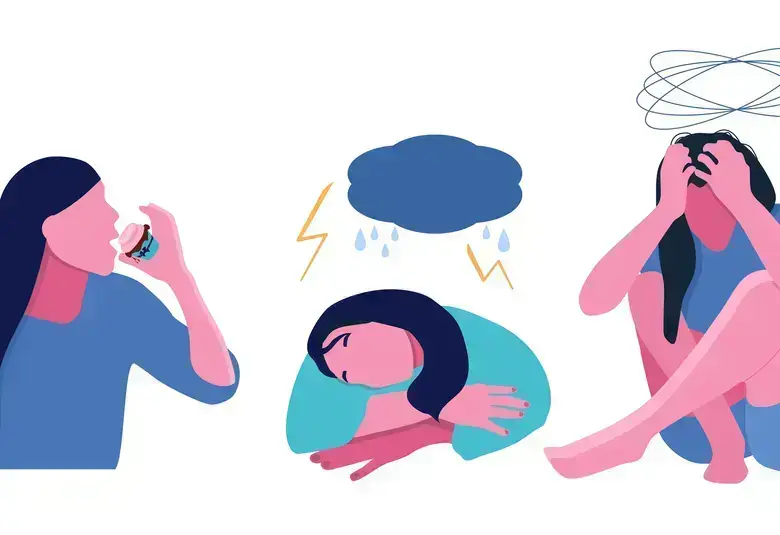Many of those experiencing first-episode psychosis achieve clinical remission, but often with poor functional outcomes. It is known that duration of untreated psychosis, negative symptoms and cognitive dysfunction are contributory factors to poor outcomes; and that early intervention can limit their impact. During EPA 2019, a symposium dedicated to early detection and interventions in psychosis described the latest findings.
첫번째 삽화를 겪는 정신병 환자 중 상당수는 임상적으로 관해에 도달하여도, 기능 저하가 발생하는 경우가 많습니다. 정신병 미치료 기간의 지속, 음성증상들, 인지기능 장애들은 기능 저하를 유발하는 요소들인데, 이러한 요인들이 미치는 영향을 조기 중재를 통해 억제할 수 있다는 사실이 알려져 있습니다. EPA 2019에서 열린 정신병 조기 발견 및 중재에 관한 심포지엄에서는 최근 연구 결과를 소개하였습니다.
We decided to stop complaining about why there were not greater numbers of easily accessible centers to facilitate the early detection (ED) and early intervention (EI) in psychosis; and do something about it, Anita Reicher-Rössler, Basel, Switzerland told EPA 2019 delegates.
스위스 바젤의 아니타 리허-뢰슬러(Anita Riecher-Rössler) 교수는 EPA 2019 참석자들에게 이제는 정신병 조기 발견(ED, early detection) 및 조기 개입(EI, early intervention)을 활성화할 수 있는 접근성 좋은 전문 센터가 부족하다는 불평을 멈추고 실질적인 행동에 나설 때라고 강조하였습니다.
Questioning national associations
전국 협회 대상 설문 조사
Thus, in 2016/17, 37 European national psychiatric associations were asked to complete questionnaires on their ED and EI services. Of the 29 responders, 18 had ED/EI services. The number of specialist centers varied among the countries, as did the population targeted and when treatment was first implemented. Only 14 respondents had ED/EI included as part of their national guidelines and just 6 countries had a national plan. The exercise, repeated in central and eastern European countries, yielded similarly variable outcomes.
2016~2017년의 기간 동안 유럽 지역의 37개 전국 정신의학 협회를 대상으로 조기 발견 및 중재 서비스에 관한 설문조사를 실시했습니다. 답변을 제출한 29개 협회 중 18개 협회는 조기 발견 및 중재 서비스를 운영 중이라고 답했습니다. 전문 센터 수와 서비스 대상 인구수 및 최초 치료 시기는 국가별로 다르게 나타났습니다. 전국 가이드라인에 조기 발견 및 중재가 포함된 경우는 14개 협회뿐이었고, 이에 관한 국가적 계획이 확립되어 있는 경우는 6개국에 불과했습니다. 중부 및 동부 유럽 국가에서 실행된 연구에서도 이와 유사하게 다양한 결과를 보였습니다.
Professor Reicher-Rössler concluded that; those services seem to be created through the efforts of enthusiastic individuals rather than any other initiative. She suggested this situation could be changed by gathering different stakeholders’ support for involvement in mental health issues.
리허-뢰슬러 교수는 조기 발견 및 중재 서비스가 특정 이니셔티브를 통해서라기보다는 열정적인 개인의 노력에 의해 제공되고 있는 것으로 보인다고 말했습니다. 또한 정신 건강 문제를 해결하기 위한 다양한 이해관계자들의 지원이 모이면 이러한 상황을 변화시킬 수 있다고 말했습니다.
Early Detection and Early Intervention services seem to be created through the efforts of enthusiastic individuals
현재의 조기 발견 및 개입 서비스는 열정적인 개인의 노력에 의해 제공되고 있는 것으로 보입니다
GET UP PIANO – real life management of FEP
GET UP PIANO – 실생활에서의 초발 정신병 관리
Sarah Tosato, Verona, Italy, described a study that investigated delivery of treatment for first episode psychosis (FEP) under real-world conditions – the GET UP PIANO (Psychosis early Intervention and Assessment of Needs and Outcomes) trial. The aim was to compare psychosocial intervention (Cognitive Behavioral Therapy + family intervention for psychosis + case management) against treatment as usual (TAU).
이탈리아 베로나의 사라 토사토(Sarah Tosato) 박사는 실생활에서의 초발 정신병(FEP) 치료를 진행한 GET UP PIANO(정신병 조기 중재와 필요 사항 및 결과 평가) 시험에 관한 연구를 소개했습니다. 이 연구는 심리사회적 개입(인지 행동 치료 + 가족 중재 정신병 치료 + 사례 관리)와 통상적 치료(TAU, treatment as usual)의 비교를 목적으로 진행되었습니다.
Following training of healthcare professionals, a total of 172 control patients and 272 treated patients were recruited from community mental health centers (CMHC) in 3 regions of Italy. Of these, 154 and 243, respectively, were assessed at the end of 9 months follow-up. In the treated group, 50.7% of patients had >20 Cognitive Behavioral Therapy sessions and 25.8% had 10-19 sessions over the follow-up period; 44.1% attended family intervention sessions. Thus, Community Mental Health Center patients with FEP appear engaged with treatment.
의료 전문가 훈련에 이어 이탈리아 3개 지역의 커뮤니티 정신건강센터(CMHC, community mental health centers)를 통해 172명의 대조군 환자와 272명의 치료군 환자를 모집했습니다. 이 가운데 대조군 환자 154명과 치료군 환자 243명을 9개월 추적 연구 후 평가했습니다. 추적 연구 기간 중 치료군 환자의 50.7%는 인지 행동 치료 세션 참여 횟수가 20회를 초과했으며, 25.8%는 10~19회 참여했습니다. 44.1%는 가족 중재 세션에 참여했습니다. 이러한 방식으로 커뮤니티 정신건강센터의 초발 정신증 환자들이 치료에 참여했습니다.
Benefits seen in treated patients
치료군 환자에게서 발견된 이점
But to what effect? Declines in both positive and negative symptoms were noted, a diminution in relapse rate, and improvements in subject perceptions of symptoms and impact on daily living were also noted compared to controls - the treated group had significantly did better in the scales for symptoms and functioning, and fewer hospital admissions compared to controls.
어떠한 치료 효과가 나타났을까요? 치료군에서 대조군에 비해 양성증상 및 음성증상 모두 감소되었고, 재발률이 감소하였으며, 증상과 일상생활 영향에 대한 주관적 인식이 개선되었습니다. 치료군 환자들은 증상 및 기능 평가척도에서 더 나은 결과를 보였으며, 대조군에 비해 병원입원 횟수가 적었습니다.
Dr Tosata concluded that this multi-element approach is feasible and effective in non-specialized services in the vast majority of incident cases of FEP. Importantly, it proves the generalizability of this type of treatment in routine care.
토사타 박사는 대다수의 초발 정신증 사례에서 이러한 다중 요소 접근법은 일반 정신과 진료에서 실현 가능한 효과적인 방식이라고 말했습니다. 여기서 주목할 점은 일상적 질환 관리에서 이러한 치료 유형이 일반화될 수 있음이 입증되었다는 것입니다.
Multi-element approach is feasible and effective in non-specialized services
다중 요소 접근법은 일반 정신과 진료에서 실현 가능한 효과적인 방식입니다
Earlier intervention feasible?
조기 중재는 실현 가능한가?
Mereke Nordentoft, Copenhagen, Denmark, explained that rather than waiting for FEP, it possibly would be of greater value to intervene in high risk groups before the onset of psychosis.
덴마크 코펜하겐의 메레케 노던토프트(Mereke Nordentoft) 박사는 정신병 초발까지 기다리기 보다는 고위험군에 속하는 환자를 정신병 발병 이전에 중재하는 것이 더 가치가 있을 수 있다고 설명했습니다.
She compared the current state of affairs to be the equivalent to treating cancer at stage 4 or intervening in cardiac illness post-myocardial infarction – and too late to mitigate the conditions’ worst effects. “We should be as ambitious as those studying cancer have been and insist on trying to prevent full-blown psychiatric disorders through EI. Ambitious - but possible.” Audience agreed with her suggested slogan “Invest in psychiatry – it pays off!”
노던토프트 박사는 현 상황을 4기 암 치료 또는 심근 경색 후 심장 질환 치료와 유사한, 최악의 증상을 완화하기에는 너무 늦은 치료 방식이라고 비교하였습니다. “우리는 암 연구자들이 해온 것처럼 야심차게 연구해야 하며, 조기 개입을 통해 정신 질환의 본격적인 발병을 예방하기 위해 노력해야 합니다. 매우 큰 포부이지만, 분명 가능한 일입니다.” 청중들은 “정신의학을 위한 투자, 그만한 가치가 있습니다”라는 노던토프트 박사의 슬로건에 동의를 표했습니다.
Prevent full-blown psychiatric disorders through Early Intervention. Ambitious - but possible
조기 개입을 통해 정신 질환의 본격적 발병을 예방해야 합니다. 매우 큰 포부이지만, 분명 가능한 일입니다
She described an Assertive Treatment program OPUS which was conducted throughout Denmark. Local teams worked with patients to offer treatment in the community including family psychoeducational support and social training skills. The efficacy of OPUS compared to treatment as usual (TAU) was assessed at 3, 5 and 10 years post-treatment. At 2 years, patients and their families appeared still engaged in the process as satisfaction levels were high, compared to TAU. However, reduction in psychotic symptoms did not last beyond this time slot.
또한 노던토프트 박사는 덴마크에서 전국적으로 실시한 적극적 치료 프로그램 OPUS를 소개했습니다. 각 커뮤니티의 로컬 팀들은 환자들과 협력하여 가족 심리 교육(family psychoeducation) 지원, 사회적 기술 훈련(social skills training) 등의 치료를 제공했습니다. 3년, 5년, 10년의 치료 후 처치 기간 동안 통상적 치료 대비 OPUS의 효과를 평가했습니다. 2년차에는 통상적 치료 대비 만족도가 높아 환자와 가족들이 치료 과정에 지속적으로 참여하고 있었습니다. 그러나 이 기간을 넘어서까지 정신 질환 증상의 완화가 유지되지는 않았습니다.
How long should Early Intervention actually last?
조기 중재는 얼마동안 지속되어야 하는가?
Data presented by Professor Nordentoft suggested that OPUS treatment for 5 years or OPUS treatment for 2 years supplemented with assertive community treatment should be offered to those most disabled by psychosis. Both treatment regimens can prevent relapses and maintain beneficial effects on negative and psychotic symptoms. Patients preferred 5 years on OPUS treatment to other options, and there were fewer drop-outs. Interestingly, an economic evaluation suggests that OPUS is cheaper that TAU over a 5-years period – a factor that may well become extremely important in future policy making worldwide.
노던토프트 교수가 제시한 자료에 따르면 5년 기간의 OPUS 또는 적극적 커뮤니티 치료 방식으로 보완된 2년 기간의 OPUS 치료가 정신병으로 인해 장애를 가진 대다수의 사람들에게 제공되어야 합니다. 두 가지 치료 유형 모두 재발을 방지, 그리고 음성증상 및 정신병적 증상에 대해 유익한 효과를 유지할 수 있습니다. 환자들은 5년 기간의 OPUS 치료를 다른 옵션보다 선호했으며, 이 경우 프로그램 중도탈락자 수가 더 적었습니다. 흥미로운 사실은 경제적 평가 결과에 따르면 5년을 기간으로 설정했을 때 통상적 치료에 비해 OPUS의 비용이 더 저렴하다는 것입니다. 이는 전 세계적으로 관련 정책을 수립할 때 상당히 중요한 요소로 작용할 수 있습니다.
OPUS is cheaper than TAU over a 5 years period
5년을 기간으로 설정했을 때 통상적 치료에 비해 OPUS의 비용이 더 저렴합니다
Reflections on MIRORR
MIRORR에서의 반영
The Mapping Individual Routes of Risk and Resilience (MIRORR) was the final early intervention study to be presented by J Wigman, Groningen, The Netherlands. This study offers an in-depth assessment of individual patterns of symptoms over time and could offer a more personalized approach to therapies.
마지막으로 소개된 조기 개입 연구는 네덜란드 흐로닝언의 J. 비그만(J. Wigman) 박사의 위험 및 회복력에 관한 개인별 루트 매핑(Mapping Individual Routes of Risk and Resilience, MIRORR)이었습니다. 이 연구에서는 시간의 흐름에 따른 개인별 증상 패턴에 관한 심층 평가를 진행했으며, 보다 개인 맞춤화된 치료 접근법을 제시할 수 있었습니다.
MIRORR follows 100 patients categorized into four subgroups, each with increasing psychopathological severity. It is a diary study which assesses diverse symptoms for 90 consecutive days. These symptoms are then used to map networks of interacting symptoms. Networks across different stages as well as individualized comparisons over time were investigated.
MIRORR 연구에서는 정신병리학적 중증도에 따라 환자 100명을 4개 하위 집단으로 구분하여 관찰했습니다. 연구는 90일 연속으로 환자들에게서 나타나는 다양한 증상을 매일 기록하는 방식으로 진행되었습니다. 그리고 기록된 증상을 바탕으로 상호 작용하는 증상들의 관계망을 매핑했습니다. 각기 다른 질환 단계를 아우르는 관계망은 물론, 시간의 흐름에 따른 개별화된 비교 연구가 진행되었습니다.
Preliminary results indicate that there are differences in symptomatology between individuals and between stage subgroups. Research and clinical practice may benefit from the more personalized, dynamic, perspective that MIRORR is uncovering.
예비 연구 결과에 따르면 종합적 증상은 개인별로, 그리고 중증도별 집단에 따라 다르게 나타났습니다. 앞으로의 연구 및 임상 시험에서는 MIRORR 연구에서 발견된 보다 개인 맞춤화되고, 역동적이고, 균형감 있는 접근법을 활용할 수 있을 것입니다.
본 자료는 Global Lundbeck 의학부에서 선별한 콘텐츠이며, 한국룬드벡의 의견과 다를 수 있습니다




